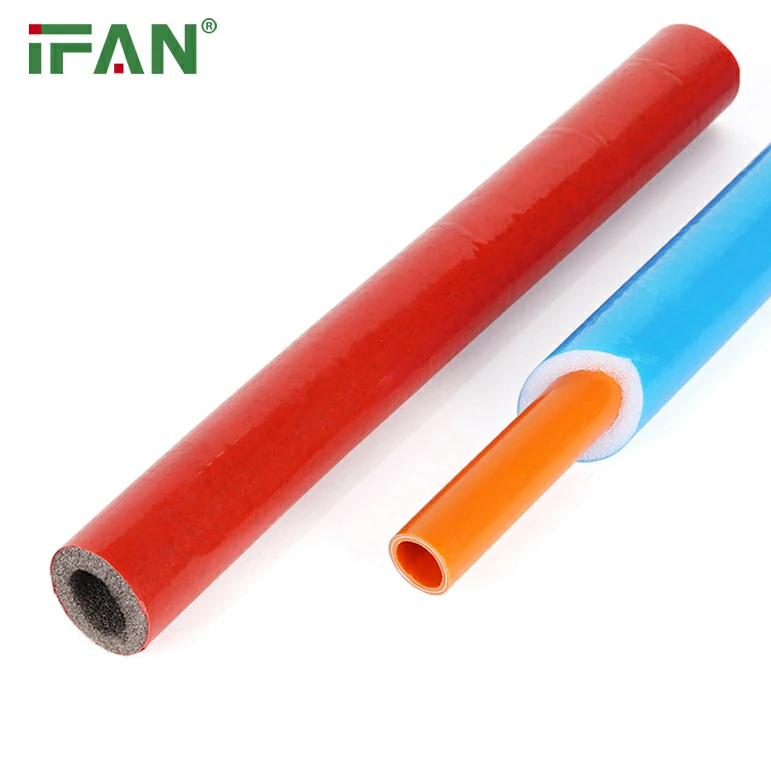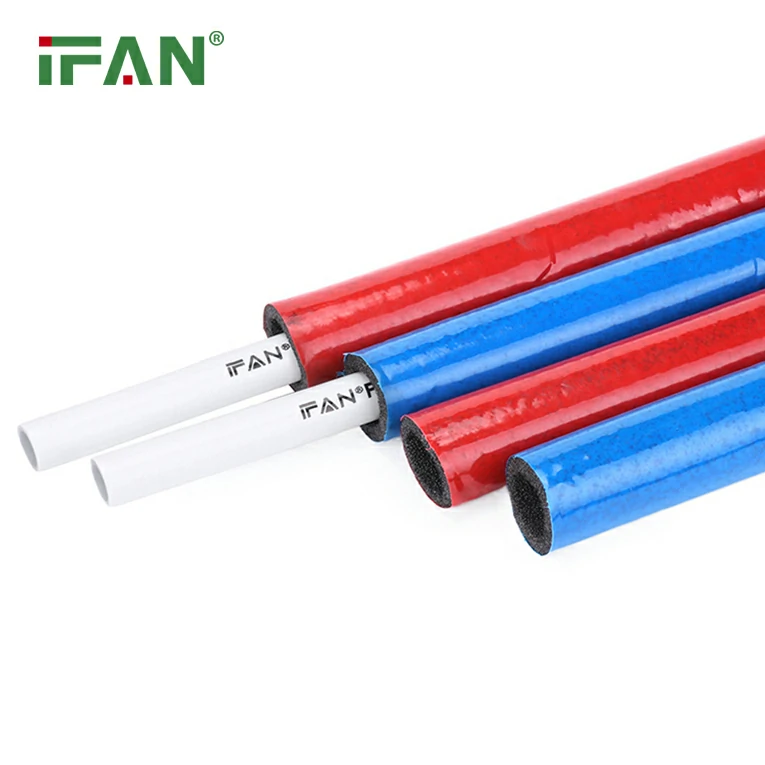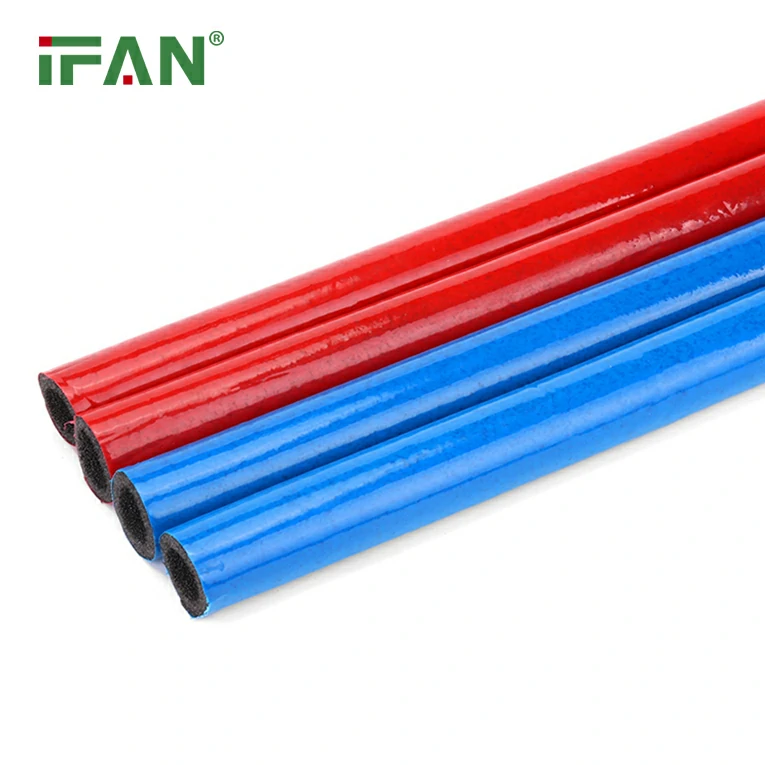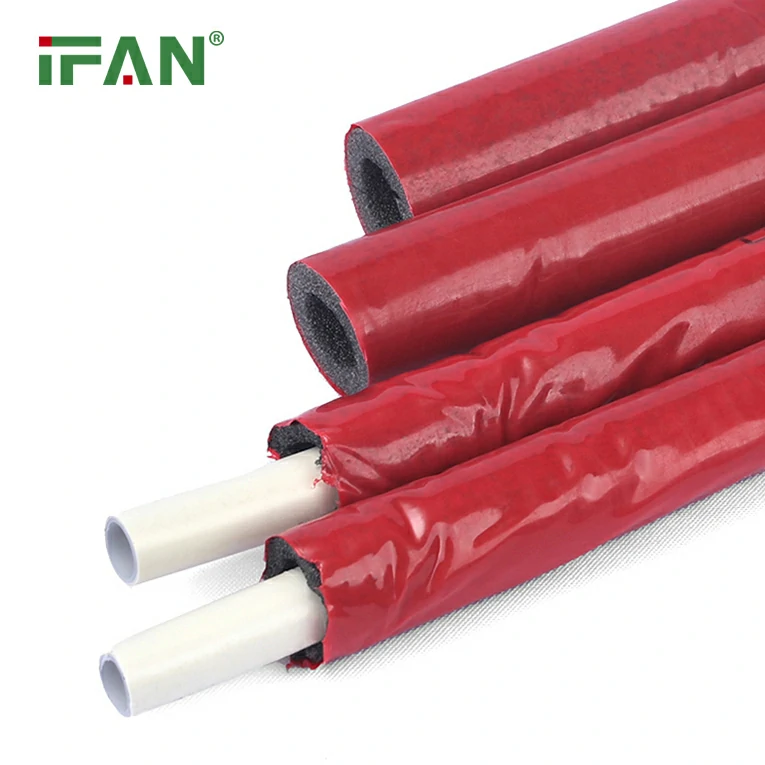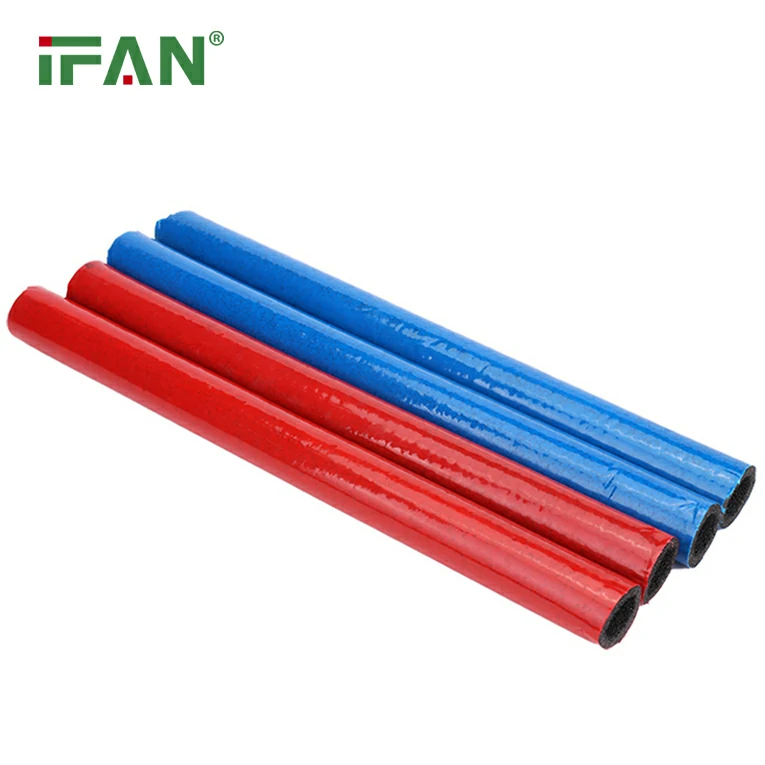IFAN factory 30+ years manufacture experience support color /size customization support free sample.Welcome to consult for catalog and free samples.This is our Facebook Website:www.facebook.com,Click to watch IFAN’s product video.Compared with Tomex products, our IFAN products from quality to price are your best choice, welcome to buy!
When it comes to industrial applications, selecting the right materials for piping systems is crucial for ensuring efficiency, durability, and long-term performance. One material that has gained significant attention in recent years is High-Density Polyethylene (HDPE). HDPE fittings are widely used in industrial applications due to their superior strength, flexibility, and resistance to various external factors. While PPR fittings are also common in residential and commercial systems, HDPE fittings are often preferred in more demanding industrial environments. In this article, we will explore the top benefits of using HDPE fittings for industrial applications, and how they compare to PPR fittings in terms of performance and cost-efficiency.
What are HDPE Fittings?
HDPE fittings are used to connect HDPE pipes in a variety of industrial applications. These fittings are made from a high-density form of polyethylene, known for its durability, strength, and resistance to chemicals, UV radiation, and temperature fluctuations. HDPE fittings are commonly used in industries such as water and wastewater management, oil and gas, mining, and chemicals. The fitting types available for industrial systems include elbows, tees, couplings, reducers, flanges, and many more.
1. Superior Durability and Long Lifespan
One of the primary reasons for using HDPE fittings in industrial applications is their remarkable durability. HDPE is a highly resilient material that can withstand the pressures, stresses, and chemical exposures that often occur in industrial environments. In comparison, PPR fittings are suitable for less demanding conditions and may not be as durable under extreme conditions like high pressure, heavy traffic, or exposure to aggressive chemicals.
HDPE fittings are resistant to most acids, bases, and salts, which are common in industrial operations. They are also impervious to rust, corrosion, and biological growth, ensuring that the pipes remain intact and functional over the long term. This makes them ideal for industries dealing with harsh chemicals, such as pharmaceuticals, food processing, and petrochemicals.
2. Leak-Free Connections with Fusion Welding
HDPE fittings are known for their ability to create leak-free connections through the process of fusion welding. In this process, the ends of the pipes and fittings are heated to a specific temperature and then fused together, forming a joint that is as strong as the material itself. The fusion welding method ensures that the joints remain leak-free under high pressure and during thermal expansion or contraction.
This is a major advantage over PPR fittings, which typically use socket or threaded connections. While PPR fittings are reliable, they do not offer the same degree of security against leakage in high-pressure systems. The fusion welding technique of HDPE fittings makes them a preferred choice for critical industrial applications where leak prevention is a priority.
3. Resistance to Corrosion and Chemicals
Corrosion is a significant concern in many industrial environments, especially when dealing with harsh chemicals and fluctuating environmental conditions. HDPE fittings offer exceptional resistance to corrosion, making them ideal for industries where metal pipes would quickly deteriorate. Unlike metal fittings, which can rust or corrode over time, HDPE fittings remain unaffected by moisture, chemicals, and acidic or alkaline substances.
This resistance to corrosion allows HDPE fittings to maintain their structural integrity, reducing the need for frequent repairs or replacements. On the other hand, PPR fittings are less resistant to certain chemicals and may degrade when exposed to harsh chemicals over time.
4. Flexibility and Adaptability
HDPE fittings are flexible and can withstand the natural movements and stresses in the environment, such as ground shifts, vibrations, and thermal expansion. This flexibility makes HDPE piping systems less prone to cracking or breaking under physical stress. HDPE fittings can also adapt to environmental changes, such as soil movements and temperature fluctuations, which makes them an ideal choice for outdoor and underground installations.
In contrast, PPR fittings are more rigid and susceptible to cracking or failure when exposed to physical stresses or extreme temperatures. For industries where flexibility is crucial, such as in underground systems or in areas with seismic activity, HDPE fittings are the better choice.
5. Cost-Effectiveness and Low Maintenance
While HDPE fittings may have a higher initial installation cost compared to PPR fittings, they offer significant long-term cost savings. The superior durability and resistance to corrosion reduce the need for maintenance and replacements, which lowers the overall lifetime cost of the piping system. Since HDPE fittings are designed to last for several decades without significant wear, industrial operators can benefit from fewer repairs, downtime, and material replacement costs.
Additionally, HDPE fittings are lightweight and easy to handle, reducing installation costs. The ease of installation combined with the long-term savings on repairs and maintenance makes HDPE fittings a cost-effective solution for industrial piping systems.
6. High Pressure and Temperature Resistance
Another significant benefit of using HDPE fittings in industrial applications is their ability to withstand high-pressure and high-temperature conditions. HDPE pipes and fittings can handle pressures of up to 1000 psi and temperatures up to 60°C (140°F). This makes them suitable for a wide range of applications, from water supply systems to industrial fluid transport systems.
In comparison, PPR fittings have a lower pressure and temperature tolerance, making them more appropriate for residential or light commercial systems. HDPE fittings are ideal for industries that require piping systems to endure high-pressure fluids or gases, as well as temperature fluctuations.
7. Environmentally Friendly
HDPE is a recyclable material, making it an environmentally friendly option for industrial applications. The long lifespan and recyclability of HDPE fittings help reduce waste and minimize the need for frequent replacements. This is in contrast to materials like metal, which are difficult to recycle and may contribute to environmental pollution when disposed of.
The sustainability of HDPE fittings aligns with the growing emphasis on environmental responsibility in the industrial sector. By opting for HDPE fittings, businesses can contribute to reducing their environmental impact while ensuring the reliability and efficiency of their piping systems.
8. UV Resistance for Outdoor Installations
HDPE fittings are resistant to ultraviolet (UV) radiation, which makes them suitable for outdoor installations. UV resistance ensures that the material does not degrade or weaken when exposed to sunlight for prolonged periods. This is particularly important in industries that require above-ground piping systems, such as irrigation, wastewater management, and chemical transport.
PPR fittings, on the other hand, are not as UV resistant and are typically used in indoor applications or areas where UV exposure is minimal.
Conclusion
HDPE fittings offer numerous advantages for industrial applications, including superior durability, leak-free connections, resistance to corrosion and chemicals, flexibility, and long-term cost savings. These benefits make HDPE fittings the preferred choice for industries requiring reliable, high-performance piping systems. While PPR fittings are suitable for residential and commercial systems, they may not be able to meet the demands of high-pressure, high-temperature, or harsh environmental conditions found in industrial applications.
Frequently Asked Questions (FAQs)
1. What is the main advantage of HDPE fittings over PPR fittings?
The primary advantage of HDPE fittings over PPR fittings is their superior resistance to corrosion, chemicals, and high-pressure environments, making them ideal for demanding industrial applications.
2. Can HDPE fittings be used in outdoor installations?
Yes, HDPE fittings are UV resistant and can be used for outdoor installations, making them suitable for above-ground systems exposed to sunlight.
3. Are HDPE fittings suitable for high-temperature applications?
HDPE fittings can withstand temperatures up to 60°C (140°F), making them suitable for many industrial applications. For higher temperatures, PPR fittings may be more appropriate.
4. How long do HDPE fittings last?
HDPE fittings have an impressive lifespan of over 50 years when properly installed and maintained, providing a long-term solution for industrial piping systems.
5. Are HDPE fittings recyclable?
Yes, HDPE fittings are made from recyclable materials, making them an environmentally friendly choice for industrial applications.

